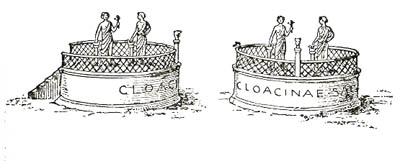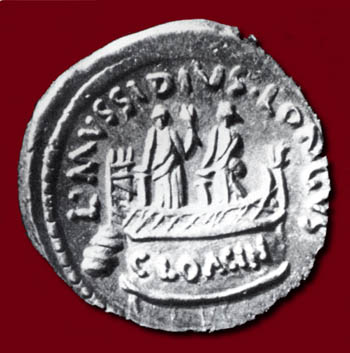

The shrine of Cloacina is attested from as early as Plautus (Curculio 471). It was located on the Via Sacra near the area of the "new shops" (Tabernae Novae) in the middle Republic. The Tabernae Novae were eventually removed to make room for the expanded Basilica Aemilia. The shrine honors the divinity of the Cloaca Maxima, and presumably dates from its construction or a major remodeling, though legend ascribes it to the period of the Sabine Titus Tatius (i.e, the reign of Romulus). At some point, this divinity was for unknown reasons associated with Venus and subsequently called Venus Cloacina, "Venus of the Sewer."
The coin shown above was minted during the Second Triumvirate in the late 40s BCE by a Lucius Mussidius Longus, and gives the clearest representation of the shrine. existing arhaeological remains conform nicely to the picture on that coin. Pliny (NH 15.119) refers to the "signa Cloacinae," which were evidently the two statues on the shrine and perhaps some other, unidentified objects. One of the statues is holding or waving an object, which may be a flower. It is not known why there are two statues.